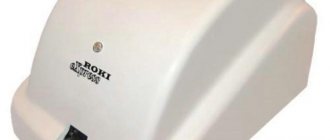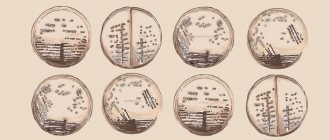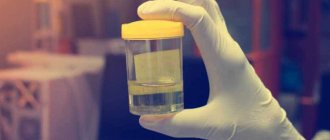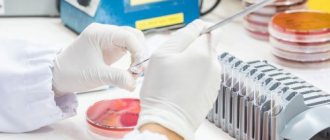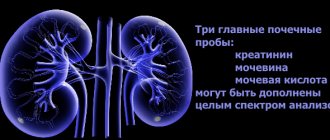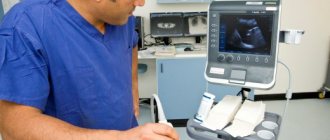It is impossible to objectively assess the condition of the body without conducting clinical and laboratory tests, including urine analysis. Modern medicine has stepped far forward, inventing more and more new equipment that is aimed at rapid diagnostics to establish a particular diagnosis.
Using a urine test, you can identify kidney and liver diseases, hypertension and other cardiovascular diseases, and diabetes. If earlier, in order to carry out an analysis, it was necessary to go to the doctor, take a referral for analysis, submit it to a research laboratory, wait for the results and send to an appointment with a doctor to receive an individual course of treatment, but now, with the advent of urine analyzers, the situation has become very simpler.
Pros of using urine analyzers
The main advantages of using this device are as follows:
- Consumes a small amount of time (the analysis takes less than a minute, but in the end you get a fairly comprehensive and quick result)
- High accuracy (research will be as accurate as possible and eliminate the risk of human factor)
- Processing and issuance of the received result (the result can be displayed on the main display, you can print the received data, create a patient database and be able to monitor health status and changes)
- Ability to process a large number of parameters.
Urine analyzers are a highly accurate and effective method for quickly identifying results and problems that exist in the body. But each device requires the use of its own test strips, and this issue should be carefully studied before purchasing and using.
Using test strips from another device most often leads to completely incorrect indicators, which can affect the course of treatment and identify the correct diagnosis.
Popular types
The most popular are:
- “UroMeter” (the LCD display displays data on the characteristics and turbidity of the biological fluid).
- “Aution Eleven” (up to 500 samples processed per hour).
- "Belur" (provides highly accurate protein analysis).
- “Laura Smart” (standard research mode - 60 strips per hour, accelerated - 240).
- "Labureader Plus" (11 characteristics analyzed).
- “Dirui CS-T240” (compact type biochemical diagnostic device with a load of 200 tests per hour).
- “URILIT 150” (compact device for studying 11 indicators with a load of up to 120 results per hour).
- “Dirui H-100” (gives results in 30 seconds, analyzing 12 parameters, memory stores up to a thousand results).
For an accurate and reliable result, you need to correctly collect urine.
Autoanalyzers designed for large diagnostic centers:
- “CL-50” (one of the most popular devices for comprehensive analysis of biomaterial).
- “Docurider” supplements the analysis with LED indication (red color – a sign of pathologies, green color – indicators within normal limits).
- “Uriscan” with options for simple and in-depth analysis, assessing the composition of urine according to 13 parameters, is capable of processing more than 700 samples of biomaterial in 60 minutes. Compact modification – “Uriscan Optima”.
- "Uriskan Pro", which measures acidity and specific gravity of urine, is equipped with a memory module (more than 2000 results).
- “UF-500i”, “UF-1000i” with a capacity of up to 60 and 100 samples per hour, respectively, are intended for bidirectional examination (bacteriological, sedimentary).
- "UX-2000", which combines strip and cell testing, allows you to obtain the most detailed information about the composition of urine, working at a speed of up to 150 studies per hour.
- The portable Clinitek Status has a throughput of about 45 tests in 60 minutes. In addition to test strips, the device is equipped with cassettes that allow you to diagnose the urine of pregnant women.
- "AM 2100" analyzes up to 11 indicators and allows you to use test strips from different manufacturers. The maximum number of tests per hour is 90. The “BEE-SURE-S” modification helps determine the concentration of alcohol and drugs in the urine.
The choice of device is determined by the planned load and specific operation.
DocUReader
The device is used to determine the qualitative and quantitative composition of urine in laboratory conditions.
The Dokurider urine analyzer is equipped with LEDs:
- the appearance of red color indicates the development of a pathological process in the human body;
- green color indicates that the person’s health is fine.
The Docureader urine test method is based on the use of reflective quantitative measurements of the energy characteristics of the radiation field. Reading and examination of the colored areas of the test strips with urine applied to them is carried out automatically.
What can be determined using the device in urine sediment:
- vitamin C;
- leukocytes;
- glucose;
- bilirubin;
- ketones;
- nitrites;
- proteins;
- blood.
The ability of the device to determine the acidity of urine and urobilinogen is important. The urine analyzer can be connected to a computer to create a document storage database. Veterinary clinics are often equipped with this universal device.
What to look for when purchasing
When choosing automatic urine analyzers, we recommend paying attention to several parameters. One of them is an indicator of the time required to carry out the analysis. The optimal figure is 30 seconds. During this time, the device must conduct an analysis and display the results on the display. It is convenient if the equipment is supplemented with a thermal printer for printing the results. Be sure to check the possibility of connecting it to computer equipment. The function of saving previous studies is another useful option. Its presence is especially convenient in laboratories with high traffic and an impressive number of patients. Ease of use is another property that you need to pay attention to when purchasing an analyzer. Modern models allow testing by pressing just one key.
Areas of application of analyzers
They are used both privately and in regional medical centers, laboratories and clinics at various levels. Suitable for use in remote communities where there are no doctors and monitoring of indicators is necessary. They allow you to quickly identify drug and alcohol intoxication and are included in the list of necessary equipment for visiting specialists in drug treatment clinics. A number of standard models are suitable for use in veterinary medicine, but there are special modifications for this area.
The analyzers are convenient and easy to use. When purchasing a device from a specialized company, managers will provide the necessary instructions on how to use the equipment. A detailed description of the operation and maintenance of the device is in the attached instructions.
Software
The analyzers use built-in software that is installed directly into the analyzers' ROM by the manufacturer.
The software is designed to control the analyzer, the controller of internal actuators and measuring devices and its settings, as well as to ensure the functioning of the interface, processing information received from measuring devices during the measurement process.
Identification data (signs) of the metrologically significant part of the analyzer software are listed in Table 2.
table 2
Software name | Identification Name BY | Software version number (identification number) | Digital software identifier (checksum) of the executable code) | Algorithm for calculating the digital software identifier |
| Analysis software Uriskrin 01 | Uriscreen | V1.41 | The data is the property of the manufacturer and is protected for dealer and user access | |
| Analysis software Uriskrin 02 | V1.41 | |||
| Analysis software Uriskrin 03 | V2.0 | |||
| Analysis software Uriskrin 04 | V2.0 | |||
| Analysis software Uriskrin 05 | V2.0 | |||
Software protection from unintentional and intentional changes corresponds to level “C” according to MI 3286-2010
Significance in diagnosis
The results of a general urine analysis are taken into account when diagnosing various diseases. Each deviation in the state of health is characterized by separate changes in quantitative and qualitative indicators.
The characteristics of clinical analysis are divided into three groups:
- physical properties of biological material;
- urinary sediment;
- content of organic substances.
Physical indicators include transparency, material odor, acidity and density.
Norm:
- color – light yellow;
- transparency – from slightly cloudy to transparent;
- density – from 1.009 to 1.031 g/l.
Norm of chemical indicators:
- acidity – from 5 to 7 pH;
- urobilin – no more than 17 mol/l;
- low protein content.
Equipment for urine analysis at competitive prices
We offer to buy new and used automatic urine analyzers with documents and a guarantee. An intuitive menu, easy search, a large number of offers - the advantages of purchasing through BiMedis. Here you can find advertisements from buyers and sellers from different countries. Our service offers you to select medical equipment based on your budget and specific purposes for using the equipment. It is enough to indicate the price range, country of origin, condition of the device and its model to find a suitable option. To communicate directly with the supplier, we suggest establishing business correspondence, where you can discuss the terms of purchase in more detail.
Working on the analyzer
- Once – immerse the test strip in the container with the sample “Attention! All test areas must be wetted"
- Two – remove excess moisture
- Three – place the test strip on the conveyor belt
That's all, then the analyzer itself will withstand the required incubation time, take a measurement, print the result and dispose of the used test strip in a special tray.
The analysis result will be displayed on the device screen and printed on a receipt.
To work with the URiSCAN-pro URiSCAN 11 strip test strips manufactured by YD Diagnostics Corp. (Korea).
To be confident in the research results, it is necessary to regularly use the control material URiTROL (Level 1, 2, 3) produced by YD Diagnostics Corp. (Korea).
What are the test strips for the Uriskan analyzer?
- GEN 11 – analyzes the content of red blood cells, bilirubin, urobilinogen, acetone, protein, nitrites and glucose, pH and specific gravity, leukocytes and ascorbic acid;
- GEN 10 – GL test strip for red blood cells, urobilinogen, nitrites, bilirubin, protein, acetone, pH, glucose, specific gravity, leukocytes;
- GEN 9 SG – determines red blood cells, urobilinogen, specific gravity, bilirubin, nitrites, acetone, glucose, protein, pH;
- GEN 9 L – examines erythrocytes and leukocytes, bilirubin and urobilinogen, acetone and nitrites, protein and glucose in urine, determines the pH level;
- GEN 8 – carries out analysis for 8 indicators, including glucose and protein, nitrites and red blood cells, bilirubin and acetone, urobilinogen and pH;
- GEN 7 – counts red blood cells, shows bilirubin and urobilinogen, detects acetone, protein and glucose, general pH level;
- GEN 7 L – determines 7 indicators including leukocytes, but without bilirubin;
- GEN 6 – examines red blood cells, protein, pH, acetone, glucose, bilirubin;
- NEPHRO 6 – test for red blood cells and nitrites, glucose, pH and leukocytes;
- GEN 5 – important parameters on the strip: urobilinogen, red blood cells, bilirubin, protein, and glucose; HEMOKETO/GPH 5 examines the same parameters, only taking into account acetone;
- HEMO/GPH 4 – tests protein, glucose, pH and red blood cells.
More on the topic: How is surgical treatment of urinary incontinence in women performed?
Principles of collection for urine testing
All urine tests that are prescribed to patients are divided into special and planned. In order for the analysis to be reliable and to be able to identify disorders of the genitourinary system, it must be collected correctly. The main factors that influence a general urine test are:
- violation of sterility when collecting material;
- long-term storage before delivery to the laboratory;
- strong physical activity before the procedure;
- pregnancy;
- menstruation;
- urethral injuries;
- taking diuretic medications.
